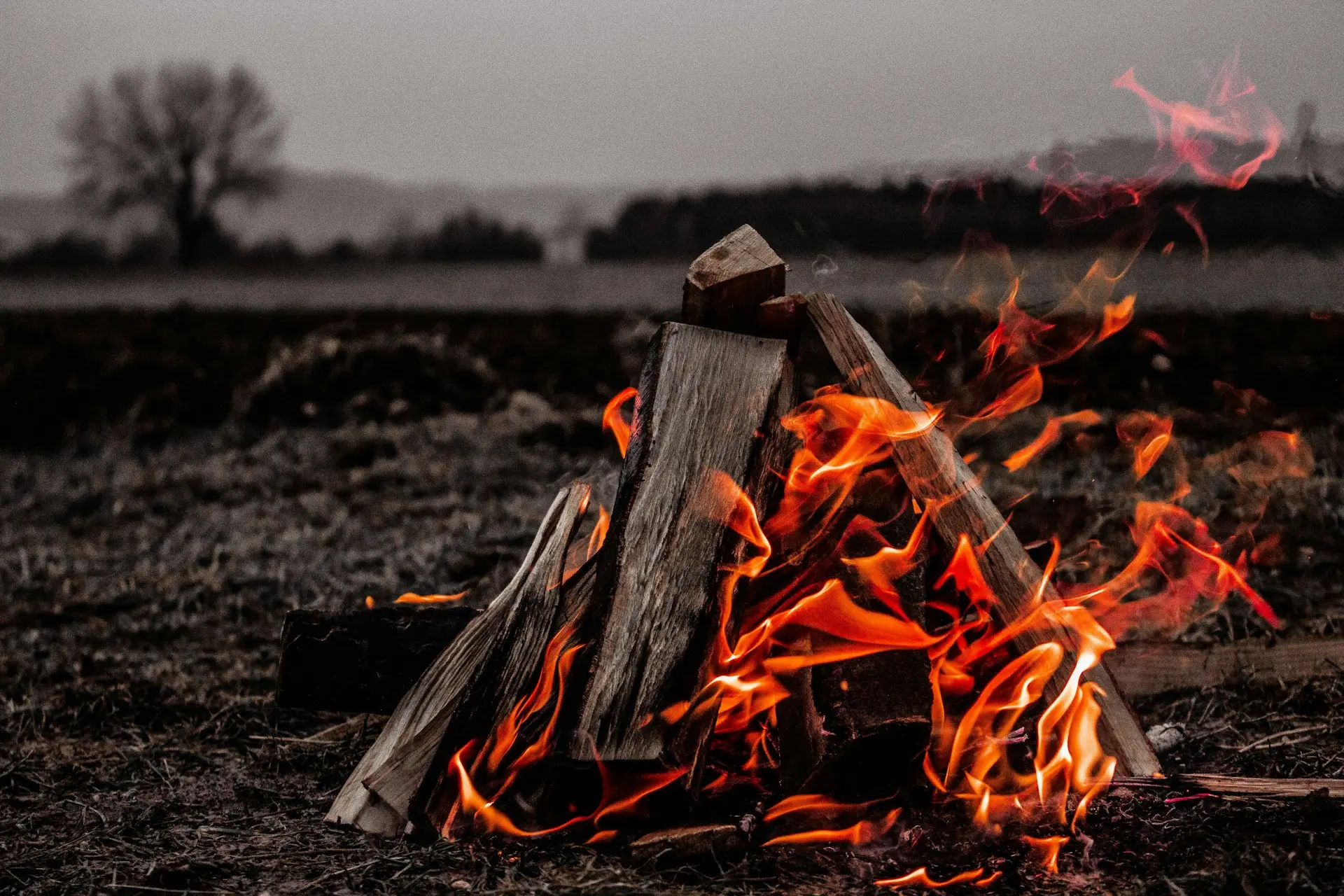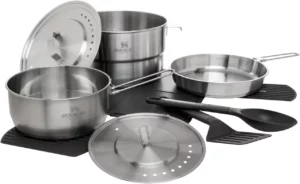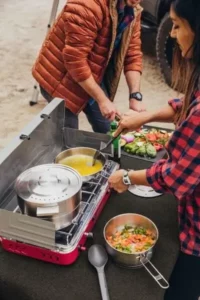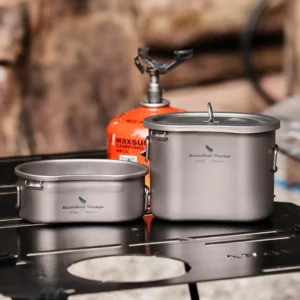What You Will Learn
- Why campfire cooking kits are essential for outdoor adventures
- The key benefits of using a campfire cooking kit
- Essential components to look for in a quality kit
- Types of materials used and how to choose the right one
- Top-rated campfire cooking kits by material
- Practical tips for safe and efficient use
- How to clean and maintain your cooking kit
- Easy, fun recipes perfect for campfire cooking
- Answers to popular questions about campfire cooking kits
There’s something timeless about cooking over an open flame. The crackling fire, the aroma of food, and the satisfaction of making a hearty meal in nature create an experience like no other. For this, a campfire cooking kit is indispensable. Whether you’re backpacking solo, gathering with friends, or camping with family, the right campfire cooking kit makes all the difference.
Let’s dive into everything you need to know to find the best cooking kit for your outdoor adventures.
What is a Campfire Cooking Kit?
A campfire cooking kit is more than just pots and pans; it’s a complete outdoor cooking solution. Designed specifically for the demands of open-fire cooking, these kits come with sturdy cookware, essential utensils, and fire-ready features. Unlike regular camping gear, a campfire cooking kit lets you create meals safely and efficiently over a flame, allowing you to savor the joys of campfire cooking with ease.
Benefits of Using a Campfire Cooking Kit
Why invest in a campfire cooking kit? Here are the key benefits:
- Convenience: Campfire kits keep all your cooking gear organized and ready for the fire. They’re designed to nestle together, saving you space and time.
- Versatility: With options for frying, boiling, and grilling, these kits let you cook a variety of meals outdoors—from a simple soup to a sizzling steak.
- Durability: Made from materials like cast iron, stainless steel, or titanium, campfire cooking kits withstand high heat and rough conditions, so they’re perfect for the rugged outdoors.
Imagine the freedom to whip up everything from breakfast pancakes to evening stews under the stars! A campfire cooking kit makes this experience seamless and fun.
Essential Components of a Campfire Cooking Kit
When picking the right kit, make sure it has the essentials for an enjoyable cooking experience:
- Cookware (Pots, Pans, and Griddles): The basics for boiling, frying, or grilling. Many kits include non-stick surfaces and vented lids for easier cooking.
- Grates and Tripods: These allow you to suspend pots or position pans over the flames safely.
- Utensils (Spatulas, Tongs, and Spoons): High-heat-resistant tools make cooking safe and easy.
- Cutting Boards and Prep Tools: Many kits include compact, collapsible cutting boards and lightweight prep tools for easy use.
- Storage Bag: A well-designed storage bag ensures your kit is easy to transport and keeps everything together.
Choose a kit that matches your needs, whether you’re cooking for one or for a crowd.
Types of Campfire Cooking Kits Based on Material
Material matters! Here’s a breakdown of common materials and their benefits:
- Cast Iron: Known for heat retention, cast iron is ideal for steady, even cooking. It’s heavy but perfect for simmering stews or searing meats.
- Stainless Steel: Lightweight, rust-resistant, and sturdy, stainless steel kits are versatile and easy to maintain.
- Titanium: Ideal for ultralight backpacking, titanium is highly durable and corrosion-resistant. It heats up fast but doesn’t retain heat as well as cast iron.
Each material has strengths suited to different camping styles, so consider what’s best for your setup.
Top 3 Campfire Cooking Kits by Material
1. Best Cast Iron: Bruntmor Pre-Seasoned 7-Piece Set
Description: The Bruntmor 7-Piece Cast Iron Set is made for those who love traditional, hearty campfire meals. This kit includes essential pieces like a skillet, Dutch oven, and griddle. All items come pre-seasoned, so they’re ready to cook as soon as you are. Bruntmor’s cast iron is built to last, providing excellent heat retention and even cooking—a must for simmering stews, searing meats, or baking over the fire
Pros: Cast iron is incredibly durable and holds heat well. This feature makes it ideal for slow-cooked meals that need consistent warmth. With proper care, cast iron pieces can last a lifetime or even longer. Many campers pass down these types of kits as family heirlooms. The pre-seasoned finish also adds a natural non-stick layer, which is perfect for campfire cooking.
Cons: The weight is a drawback. Cast iron is heavy, so it’s not ideal for backpacking or carrying over long distances. This kit works best for car camping or RV trips where weight isn’t an issue. It also requires special care, like drying thoroughly to prevent rust.
Ideal For: Car campers, RV enthusiasts, or anyone who wants authentic campfire cooking. Cast iron is perfect for slow cooking, making it the best choice for comfort foods by the fire.
2. Best Stainless: Stanley Adventure Even-Heat Camp Pro
Description: The Stanley Adventure Even-Heat Camp Pro is a stainless steel kit designed for outdoor families or groups. This kit includes a stock pot, saucepan, and a frying pan, each with vented lids. The items nest together to save space and make packing a breeze. This kit includes extras like a collapsible cutting board and a sturdy spatula, making it a versatile choice
Pros: Stainless steel is lighter than cast iron, rust-resistant, and easy to clean. This makes it perfect for handling rugged camping conditions without added weight. The Stanley kit’s vented lids allow for precise cooking, while the heat-resistant design ensures even heating without scorching. Another plus? Stainless steel is dishwasher-safe once you’re back home, which makes cleanup easy.
Cons: While it’s lighter than cast iron, stainless steel can still be a bit heavy for those who prioritize minimal gear. Also, this kit is on the pricier side, reflecting the quality of materials and design. It doesn’t include utensils or a carrying bag, so you’ll need to pack those separately.
Ideal For: Families or groups who want versatile, durable cookware that’s still relatively lightweight. This kit works well for a range of meals, from simple breakfast scrambles to more elaborate dinners.
3. Best Titanium Boundless Voyage Titanium Kit
Description: If you’re a solo adventurer or backpacker, the Boundless Voyage Titanium Kit is your best bet. Titanium is known for being incredibly light yet strong, and this kit includes a canteen, two pots, and a cup. With its compact, lightweight design, the Boundless Voyage kit is ideal for backpacking and minimalist camping. It’s corrosion-resistant and easy to carry, perfect for hiking trips
Pros: Titanium is lighter than both cast iron and stainless steel, making it easy to carry on long treks. It heats up quickly, so you can boil water or cook simple meals fast. Titanium’s strength-to-weight ratio is outstanding, ensuring durability without extra heft. The kit is also corrosion-resistant, meaning it can withstand the elements.
Cons: Titanium’s heat distribution isn’t as even as cast iron or stainless steel, so it requires attention to avoid hotspots. The material is also pricier, and it doesn’t retain heat as well, which may be an issue for slow-cooked meals.
Ideal For: Solo campers, backpackers, and those focused on lightweight, minimalist setups. Titanium is perfect for quick, simple meals or boiling water, but it may not suit gourmet campfire cooking.
Choosing and Using
Factors to Consider When Choosing a Campfire Cooking Kit
When selecting a kit, think about:
- Weight and Portability: Choose a lightweight option if you’re hiking far; otherwise, bulkier kits are fine.
- Capacity: For solo trips, smaller kits are ideal, while larger kits suit families or groups.
- Cooking Style: Some kits excel in frying, others in boiling. Pick one that meets your cooking goals.
- Ease of Cleaning: Look for materials and coatings that clean easily, especially outdoors.
Consider how much space you need and how heavy you want the kit to be. These factors will guide you to the right choice.
How to Use a Campfire Cooking Kit Safely
Campfire cooking is fun, but safety is key. Here are a few tips:
- Stabilize Your Cooking Surface: Use a tripod or grate to keep cookware steady.
- Keep a Safe Distance: Avoid placing cookware directly in flames; this prevents uneven heating and burns.
- Use Heat-Resistant Utensils: Silicone or metal utensils handle high temperatures best.
Remember, safety keeps the fun going and makes sure everyone enjoys the meal.
Maintenance and Cleaning Tips
Keeping your campfire cooking kit clean and ready for next time is simple:
- Use a Scraper or Sponge: After cooking, scrape off food residue while it’s still warm.
- Biodegradable Soap: This eco-friendly option is safe for the environment and cleans well.
- Dry Thoroughly: Especially for cast iron, ensure everything is dry before storing to prevent rust.
With these simple steps, your kit will last for years and stay in good shape.
Top Recipes and Cooking Techniques
Ready to try out your kit? Here are some easy and delicious campfire recipes:
- One-Pot Chili: Just add beans, meat, spices, and let it simmer for a hearty meal.
- Grilled Veggies and Meat Skewers: Skewers are easy to cook over a fire and great for sharing.
- Campfire Breakfast Burritos: Wrap eggs, veggies, and cheese in tortillas for a tasty breakfast.
Each recipe is simple, flavorful, and perfect for the campfire, adding joy to your outdoor experience.
FAQs on Campfire Cooking Kits
How do you clean a campfire cooking kit while camping?
Clean your kit with a scraper or sponge. Use biodegradable soap if possible. Avoid abrasive materials to protect surfaces.
What foods are best suited for campfire cooking kits?
Stews, grilled meats, and skillet meals are perfect. They’re easy to cook and packed with flavor. Bring pre-prepped ingredients for faster cooking.
How should campfire cooking kits be stored?
Dry your kit completely before storage to prevent rust. Store in a bag or container to keep it safe. For cast iron, add a light oil coat.
Which materials are best for high-heat campfire cooking?
Cast iron and stainless steel handle high heat well. Titanium is great but may heat unevenly. Choose based on your cooking needs and style.
What’s a good beginner recipe?
One-pot stews or soups are great to start with. Grilled veggies and meats are also easy. Try recipes that require minimal ingredients and tools.
Can campfire cooking kits work on other heat sources?
Yes, many kits work on camp stoves and grills. Cast iron and stainless steel are versatile options. Just check compatibility with your gear.
How do I prevent food from sticking?
Use a bit of oil or butter to coat the pan. Preheat cast iron pans for best results. Avoid high-sugar foods that easily burn.
Are there lightweight options for backpacking?
Yes! Titanium kits are ultralight and portable. Stainless steel options are also fairly light. Choose compact designs to save space and weight.
Do I need special utensils for campfire cooking?
Heat-resistant silicone or metal utensils are best. They can withstand high temperatures without melting. Avoid plastic unless rated for high heat.
Can I use a campfire cooking kit indoors?
Some kits can be used indoors on gas stoves. Avoid using on glass-top stoves to prevent damage. Always check manufacturer recommendations.
What’s the best way to pack a campfire cooking kit?
Pack items in nesting order to save space. Use protective padding for cast iron items. Compact designs make packing easier!
Conclusion and Recommendations
Choosing the right campfire cooking kit makes camping meals easier and more enjoyable. From material choices to top brands, the right kit turns cooking into a fun, safe, and satisfying part of the adventure. Pick one that suits your needs, and you’ll be ready for many delicious meals in nature.
Please check below video on campfires 101
External Links
- Safety tips for campfire cooking – National Park Service provides essential safety practices to consider when using campfires in the wild, including tips on fire safety, extinguishing techniques, and precautions around vegetation.
- Guide to camping cookware materials – This REI article discusses the pros and cons of various cookware materials for camping, like stainless steel, titanium, and aluminum, helping campers choose the best cookware based on weight, durability, and cooking needs.
- Simple recipes for campfire cooking – AllRecipes offers a collection of outdoor-friendly recipes that are perfect for campfire cooking, with options ranging from simple grilled vegetables to more intricate dishes ideal for a campsite meal.







